15 November 2016

After enjoying watching a Sea of Cloud and a hearty breakfast at the Kiri-no-Sato Lodge in Takahara, we started on Day 2 of our Kumano Kodo hike at about 8.40 AM. The first few hundred metres through the Takahara village was STEEP and I reckoned the incline was about 30 to 40 degrees. Panting heavily, we walked past residential area with Koi ponds and even a small pony in someone’s backyard.



The Japanese loves having water features outside their houses.

Finally, after the steep climb, we reached the “top” where the gradient level off slightly as we reached the edge of the forest.

Signs of autumn could be seen as we entered into the forest. Yellow leaves of a small gingko tree gave hope that more colourful foliage could be seen along the trail.
The stone paved path that led us into the forest, together with the morning light filtering through the tall pine trees and the cool weather, was reminiscence of the Nakasendo Trail we hiked in spring. It was good to experience this again along the Kumano Kodo.


Somehow, travellers all over the world like to stack stones and it was no different along the trail.

Stacked stones placed on a wooden stake.

Unoccupied house along the way. The architecture reminds me of the ones at Shirakawago.

It was mostly uphill for a long time. The gradient was not too steep, so it was quite a nice walk through the forest of cedar pines.

As usual, the trail was well signposted. After 1.8 km, we reached Daimon-Oji. At most of the Oji, there would be a small wooden hut with a rubber stamp and red ink pad (as shown on the left side of the photo below). This is for pilgrims to collect souvenir stamps on their little notebooks or paper along the Kumano Kodo hike. Those who collected enough stamps will get a free, small token when presenting them at the Hongu Heritage Center located near the Hongu Taisha Shrine.

In addition, there were interpretive signboards explaining the significance and history of the Oji at the site.

We met a couple of other hikers coming from the opposite direction but we were mostly alone. There were periods where we could see the views of the surrounding mountains as we climbed higher on our journey.

About 1.5 hours past Takahara is the Jujo-oji clearing, with benches and an ideal spot for a rest or picnic lunches. There is a toilet at this site as well. Like most parts of Japan, the toilets are clean and well maintained!
It was here that I decided to switch my cotton T-shirts that was wet from my perspiration (and uncomfortable to wear when wet) to a T-shirt with better material that will wick perspiration away from my body.
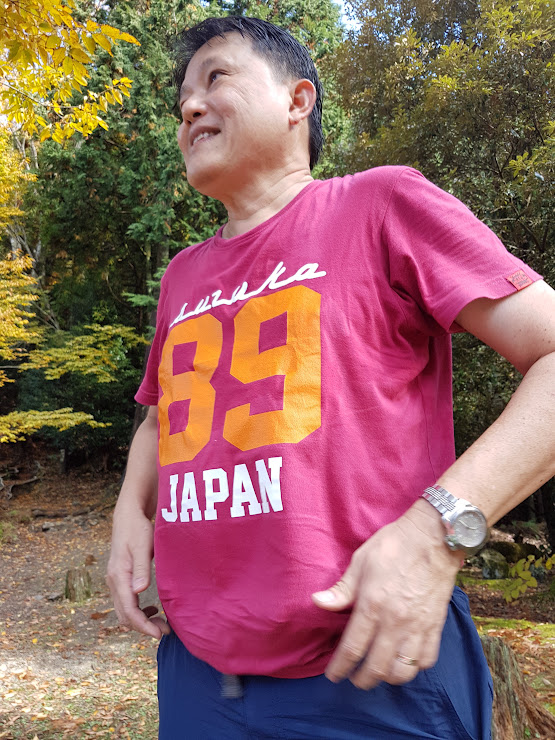

After a short rest at the Jujo-Oji, we continued on the well marked trail. There were stone markers, statues along the Kumano Kodo route. Some stones marked the place where pilgrims in the old days had perished while making the journey.

The highest part of this trail is the remains of the Uwada-jaya Teahouse (~690 meters above sea level) near signpost number 18. Teahouses were an important part of the infrastructure along the ancient Kumano route offering places to rest and also allow exchanges or trade between the pilgrims and the local people. There was no tea house standing, just a marker.


A signpost marked a detour and route leading to the Three-Fold Moon Viewing area. The Three-Fold Moon is a legend about a Yamabushi mountain ascetic and his miraculous encounter with the Kumano deities. We did not take the detour as it was unlikely we will see any moon in the day or come across any deities.
The trail then descended quickly to a creek by Osakamoto-oji.
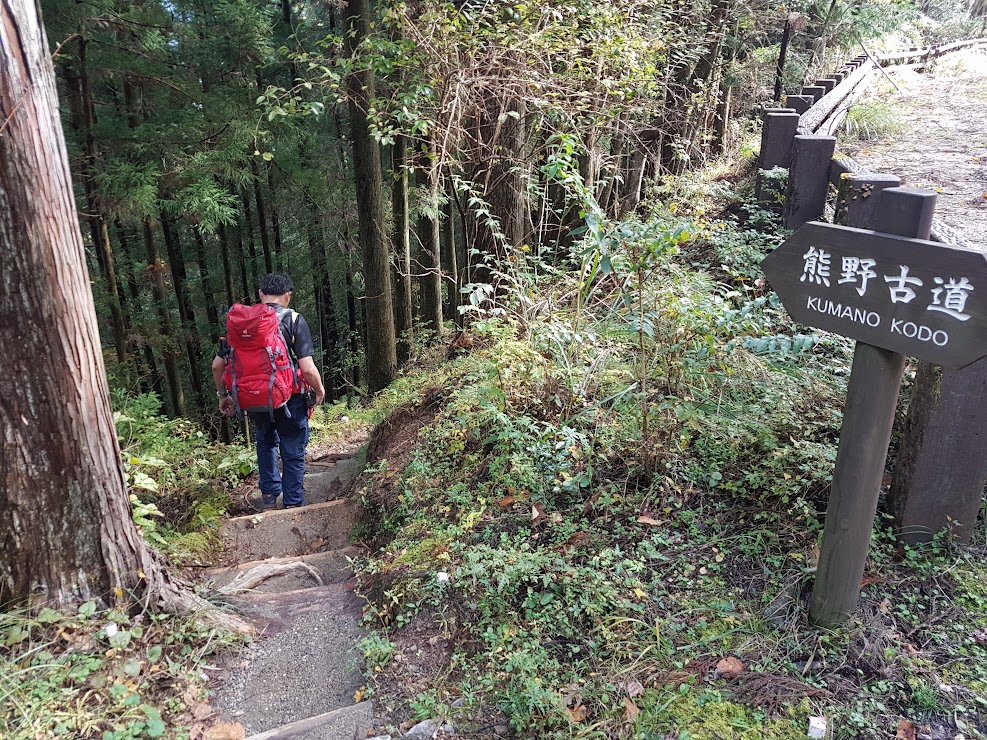 .
.
Would you believe me if I told you that there are crabs living along in the Kumano Kodo trail?

I was surprised by the first crab I spotted. Then more and more were seen as I descended towards Osakamoto-oji.
Crabs needs water to survive and there was a creek near Osakamoto-oji. In fact the whole area near the Oji was wet, green and mossy.



This was one of my favourite place during Day 2 of the hike. I called it the “moss valley” as there were plenty of green moss, tiny mushrooms and miniature plants growing on damp rocks and tree stumps.
I spent quite some time taking photos at this site. Here are some the photos.
 Wooden bridge crossing the creek.
Wooden bridge crossing the creek.
 Tiny sprouts growing out of moss from a damp tree stump.
Tiny sprouts growing out of moss from a damp tree stump.
 These miniature plants on the moss looked like pine trees growing on a lawn by the edge of a cliff.
These miniature plants on the moss looked like pine trees growing on a lawn by the edge of a cliff.


From Osakamoto-oji, we continued along a trail running by a small creek until the pilgrimage route connects with Highway #311. Across the highway is the Kumano Kodo Nakahechi Michi-no-Eki rest stop. This rest stop serves Kumano Kodo hikers as well as travellers on cars and buses along the Highway #311.

The store sells local souvenirs, snacks, onigiri rice balls and hot drinks, and has a collection of vending machines. We bought hot coffee and ate our packed lunch sitting on a public bench outside the store. The packed lunch provided by the Kiri-no-Sato Lodge was disappointing. It consist of a bread bun with some ham (like a burger) wrapped in aluminium foil, a couple of small local oranges and some baked sweet potatoes. The bun was OK, the oranges was sweet and refreshingly delicious and excellent to eat along a hike but the sweet potatoes was an epic fail. They were not entirely cooked and hard. I felt a little angry that we could not eat them after carrying them all the way up and down the mountain.
One thing about Japan is that we were supposed to carry our own rubbish and throw them at our own home. So there was no rubbish bin except for one outside the store and it was meant for the used coffee cups and cans from the vending machine. I felt bad about throwing our heavy, uneaten sweet potatoes into THAT bin. I ended up packing the heavy, raw and uneaten sweet potatoes into my backpack again and lugged them all the way to our lodging in Chikatsuyu.


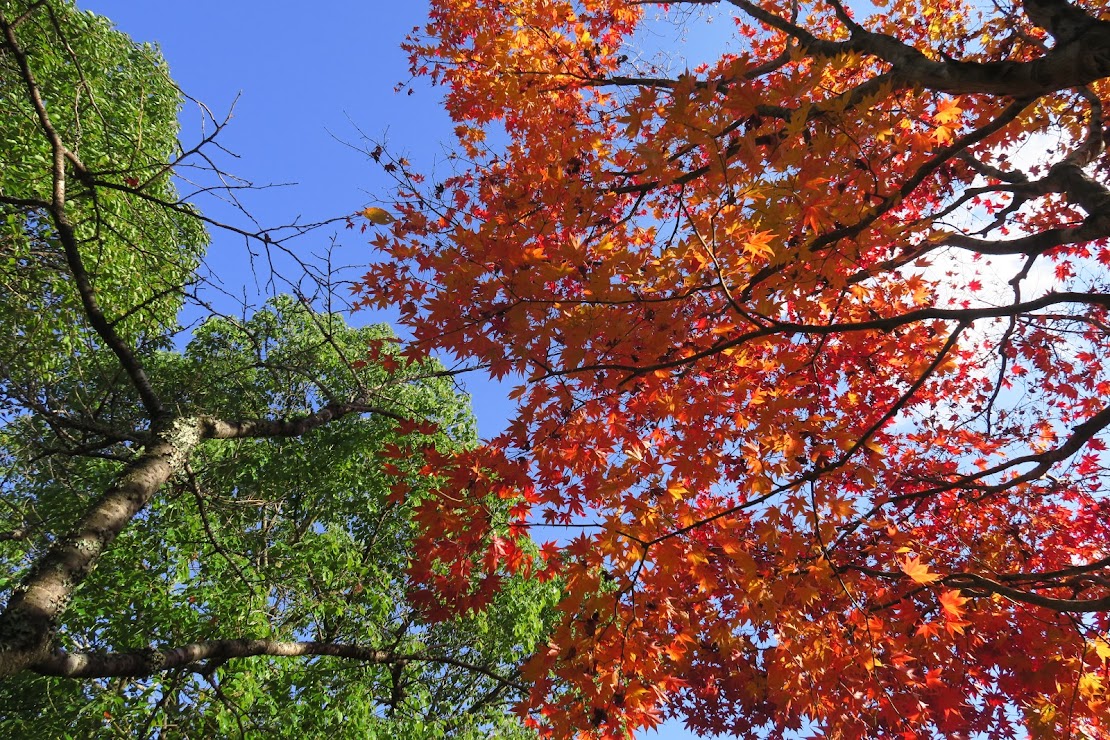
From the rest-stop, we crossed the road again and a short climb led us to the Hashiori-toge pass and a collection of statues.

The stature on the left is known as Gyuba-doji and depicts Retired Emperor Kazan (968-1008) as a boy riding a horse and cow. He was one of the first to make an
imperial pilgrimage to Kumano.

To its right is a stone carving of Ennogyoja, the legendary founder of Shugendo,
a mixed religion based on mountain ascetic practices. There is also a third monument, a Hokyoin-to stupa dating from the 12th century located behind the two statues.
The names Hashiori-toge and Chikatsuyu were derived from an event which took place here during one of the first imperial pilgrimages to Kumano. Kazan was constructing sutra mounds when he picked up two reeds to use as chopsticks. Upon noticing dew on the red stalk, he asked if it was “blood or dew”, “chi ka tsuyu” in Japanese. Subsequently, the pass was called “Hashiori” or “bent chopsticks” and the village was called “Chikatsuyu”.
A short walk further, we came out of the forest with views of Chikatsuyu village in the valley below.

Beautiful autumn leaves on trees lined the path leading down to the village.

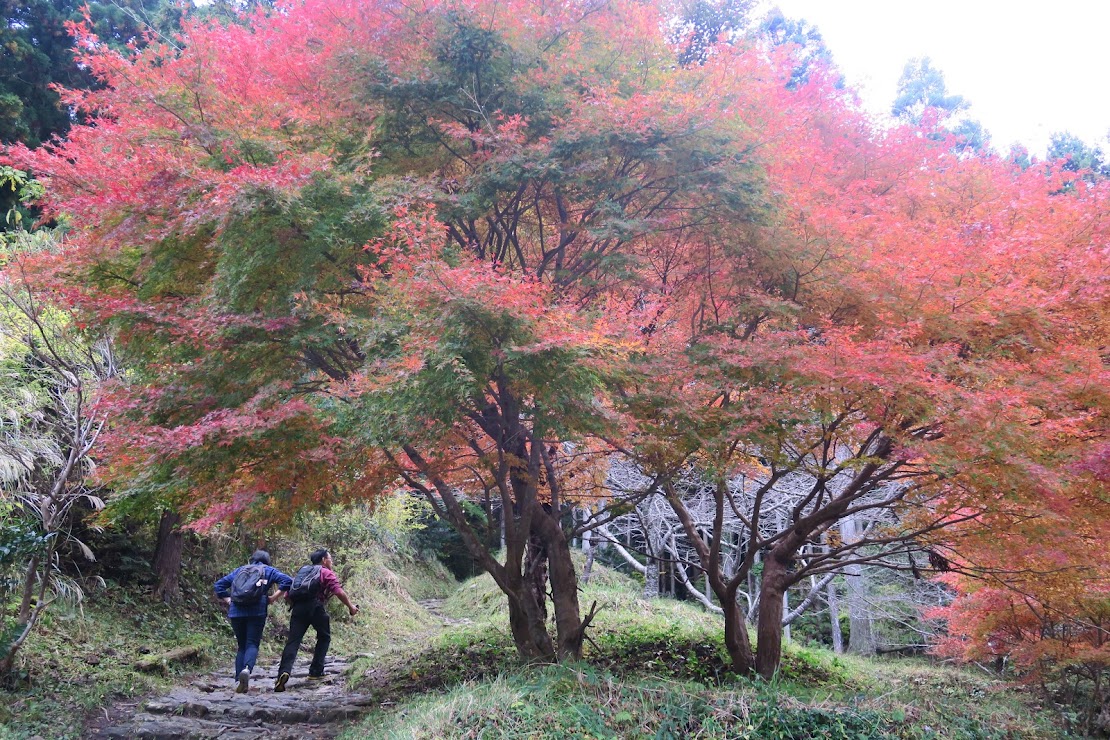
Chikatsuyu-oji is located on the left just past the bridge and there were more yellow and red foliage on trees to be seen. In the old days pilgrims would perform cold-water purification in the river, one of many religious rites they performed on their way to the tree holy Kumano Grand Shrines.
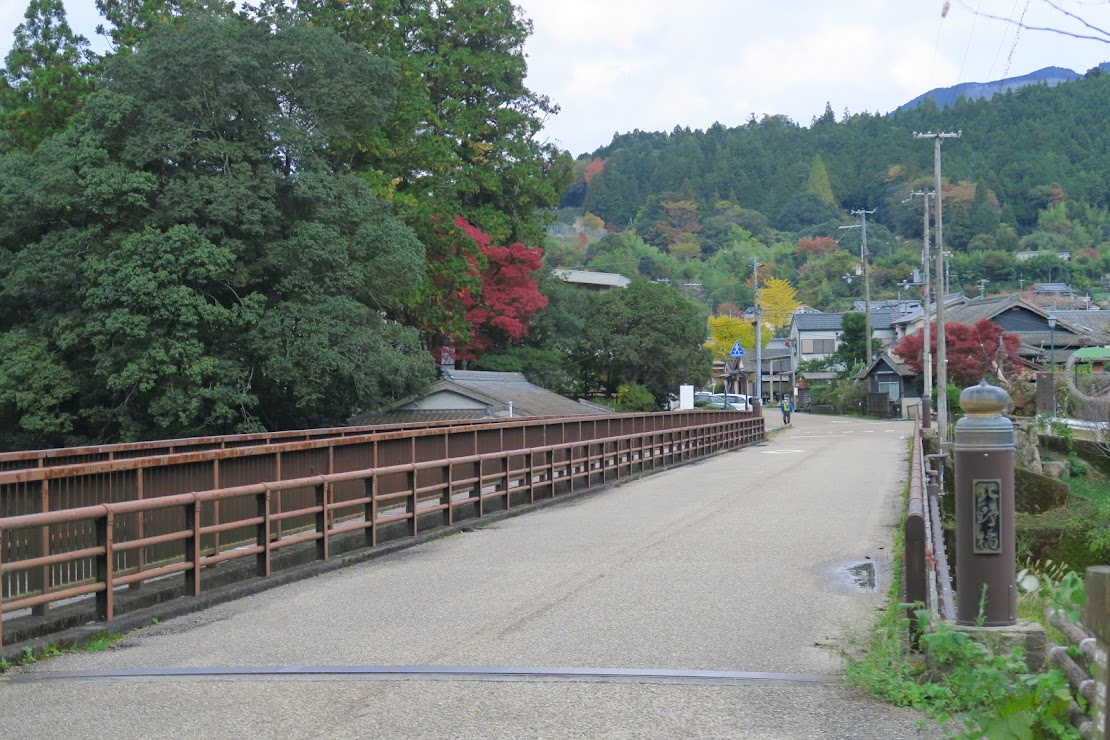


Our accommodation for the night is at the Minshuku Chikatsuyu. It is located by the Hiki river and can be seen (small white building with light grey roof) to the right in the photo above.
Being city folks, it was nice to spot vegetables like brocolli, radish, lettuces grown by the villagers





We arrived at about 3.20 PM and just perfect timing for check-in. Minshuku Chikatsuyu is family owned and managed. The young, pretty lady host was hanging laundry when she spotted us walking to the minshuku. She stopped what she was doing and checked us into our room, which was one of the largest in the small minshuku with 6 rooms. I guess we were given the best room since I was probably the first person to make a reservation for this day about 6 months ago.

The rooms are simple Japanese style, with futons laid out on the tatami floor. As this is a minshuku and not a ryokan, we have to make our own beds which is not a problem. Face and bath towels, toiletries, yukatas are provided as shown above, plus iced and hot water in flasks at the main entrance.
Like most minshukus and even ryokans in rural Japan, there is no attached toilets or bathroom. The shared indoor onsen is housed in a small building next to the minshuku. A soak in the hot spring water is prefect remedy for tired legs and body that was what we did next!
More about our evening in Chikatsuyu in the next post.


 Persimmon tree next to the gingko tree.
Persimmon tree next to the gingko tree.
